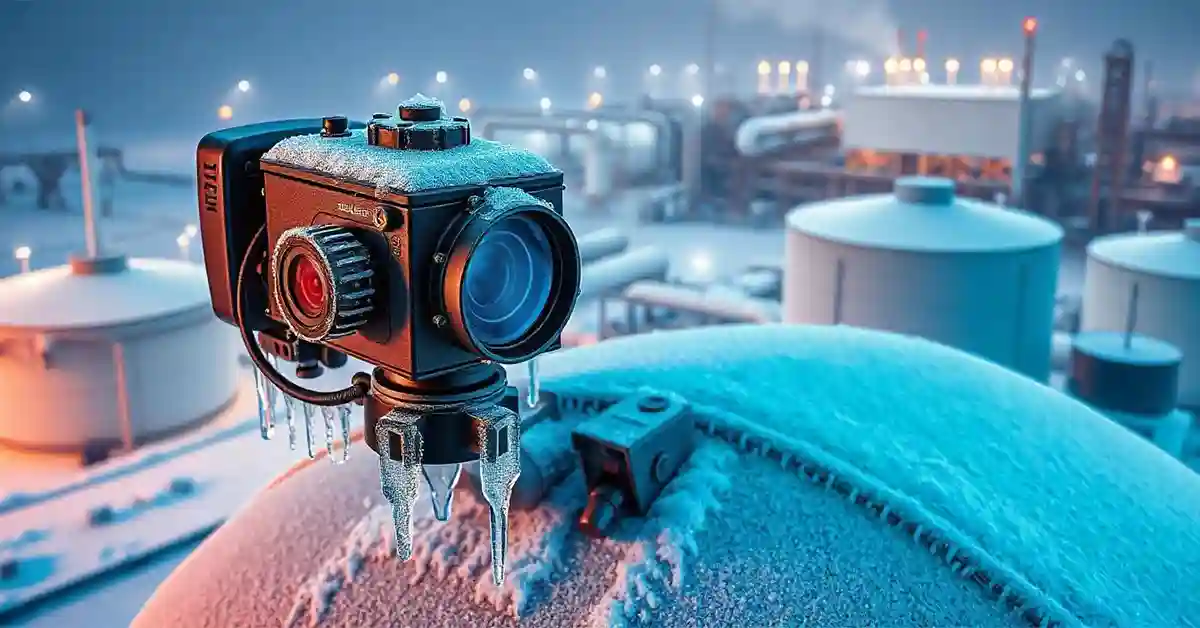Industrial environments, especially those exposed to explosive atmospheres, require specialized equipment that can operate reliably and safely. One such piece of essential equipment is the Subzero Industrial Camera—designed specifically to function in subzero temperatures and hazardous conditions. These cameras come with an ATEX rating, certifying them for use in potentially explosive environments, making them indispensable for industries like oil and gas, petrochemical, mining, and pharmaceuticals.
What is an ATEX Rating?
ATEX (Atmosphères Explosibles) is a European Union directive that standardizes the equipment and protective systems intended for use in explosive atmospheres. An ATEX-rated device is certified to be used in areas where there is a risk of explosions due to flammable gases, vapors, dust, or other hazardous substances.
Subzero industrial cameras with ATEX certification are robust and built to prevent ignition sources from causing explosions, offering safety and reliability. The cameras are crucial for inspection, monitoring, and surveillance in environments where traditional cameras would either malfunction or pose a significant risk.
Key Features of ATEX-Rated Subzero Industrial Cameras
- Subzero Temperature Tolerance These cameras are engineered to work effectively in freezing conditions, withstanding temperatures far below 0°C. In industries like oil and gas exploration in the Arctic or mining operations in high-altitude regions, this capability is crucial.
- Explosion-Proof Design ATEX-certified subzero industrial cameras are housed in enclosures designed to contain any internal ignition sources, preventing them from interacting with the outside environment. This makes them ideal for hazardous areas where gases or dust particles could ignite.
- Corrosion Resistance Many industrial environments expose cameras to harsh chemicals and moisture. Subzero cameras are built with materials that resist corrosion, prolonging their lifespan and reducing the need for frequent maintenance or replacement.
- Rugged Construction These cameras are made to withstand not only extreme temperatures but also harsh industrial conditions like heavy vibrations, dust, and water ingress. Their durable construction ensures consistent performance in even the most challenging environments.
- High Image Quality Despite the harsh conditions, ATEX-rated subzero industrial cameras deliver high-resolution images and video. Whether used for visual inspection, process monitoring, or safety surveillance, these cameras ensure clear and reliable imaging.
- Remote Monitoring Many subzero industrial cameras feature remote monitoring capabilities, allowing operators to oversee operations in hazardous areas from a safe distance. This minimizes the need for human presence in dangerous locations, enhancing safety and operational efficiency.
Applications of ATEX-Rated Subzero Industrial Cameras
- Oil & Gas Industry In offshore oil platforms or remote arctic drilling sites, where low temperatures and explosive gases are a constant threat, subzero cameras are used for safety monitoring, equipment inspection, and perimeter surveillance.
- Chemical and Pharmaceutical Plants Chemical plants often deal with volatile substances that can easily ignite. Subzero ATEX-rated cameras ensure safe, continuous monitoring of processes and critical areas, even in cold storage facilities.
- Mining Operations Underground mining environments present a mix of explosive dust and gases. Subzero industrial cameras provide a safe solution for monitoring these dangerous conditions, helping prevent accidents and ensure the safety of miners.
- Food and Beverage Industry In cold storage and refrigeration facilities within the food industry, these cameras ensure compliance with safety regulations by providing real-time monitoring of temperature-sensitive processes.
Benefits of Using Subzero Industrial Cameras
- Enhanced Safety: By providing real-time monitoring in hazardous areas, these cameras reduce the risk of explosions and other accidents.
- Operational Efficiency: Remote monitoring capabilities allow for reduced human intervention in dangerous environments, enhancing efficiency and minimizing risks.
- Longevity: Their rugged design and corrosion-resistant materials ensure that subzero industrial cameras have a long operational life, even in the most demanding environments.
Conclusion
In environments where subzero temperatures meet explosive atmospheres, the ATEX-rated subzero industrial camera is a critical tool for ensuring safety and operational efficiency. Designed to withstand extreme cold and hazardous conditions, these cameras are indispensable for industries that prioritize safety, reliability, and performance. By investing in ATEX-rated cameras, industries can better protect their workforce, safeguard equipment, and maintain seamless operations, even in the harshest environments.
FAQs
1. What is a subzero industrial camera?
A subzero industrial camera is designed to operate reliably in environments with extremely low temperatures, typically below 0°C. These cameras are built for rugged industrial conditions, making them suitable for applications in cold, hazardous, and challenging environments.
2. What does ATEX-rated mean?
ATEX (Atmosphères Explosibles) is a European Union directive for equipment used in explosive atmospheres. An ATEX-rated camera is certified to prevent internal ignition sources from causing explosions in environments with flammable gases, vapors, dust, or other hazardous materials.
3. What industries use ATEX-rated subzero cameras?
ATEX-rated subzero cameras are used in industries such as:
- Oil and gas (offshore platforms, drilling sites)
- Mining (underground operations)
- Chemical and pharmaceutical plants
- Food and beverage industry (cold storage and refrigeration)
- Petrochemical refineries
- Hazardous material storage facilities
4. Can these cameras operate in extremely cold environments?
Yes, subzero industrial cameras are specifically designed to operate in temperatures well below 0°C, making them ideal for environments like Arctic oil exploration, cold storage warehouses, or high-altitude mining sites.
5. Why is an ATEX rating important for subzero cameras?
The ATEX rating ensures that the camera can safely operate in potentially explosive environments. These cameras are explosion-proof and prevent internal sparks or heat from igniting flammable gases, vapors, or dust, making them crucial for safety in hazardous zones.
6. Are subzero ATEX-rated cameras resistant to corrosion?
Yes, most subzero ATEX-rated cameras are made from corrosion-resistant materials to withstand exposure to harsh chemicals, moisture, and other corrosive elements commonly found in industrial environments.
7. What kind of imaging quality can I expect from a subzero industrial camera?
Despite their rugged design, subzero industrial cameras typically provide high-resolution imaging and video quality. This ensures clear monitoring, safety inspection, and process control, even in harsh and cold environments.
8. Can subzero cameras be monitored remotely?
Yes, many subzero industrial cameras offer remote monitoring features. Operators can oversee processes or safety conditions from a distance, minimizing the need for personnel to enter hazardous areas.
9. How durable are these cameras?
Subzero industrial cameras are built to be extremely durable. They are resistant to vibrations, dust, water, and other extreme conditions, ensuring continuous performance in even the most demanding environments.
10. Do ATEX-rated subzero cameras require frequent maintenance?
Due to their robust construction and corrosion-resistant materials, these cameras generally require minimal maintenance. However, regular inspections may be necessary to ensure optimal performance, especially in highly corrosive or high-impact environments.
11. What are the safety benefits of using subzero ATEX-rated cameras?
The primary safety benefit is the ability to monitor and inspect dangerous, explosive-prone environments without exposing workers to unnecessary risks. Their ATEX certification ensures that the camera does not create an ignition source, reducing the chances of industrial accidents.
12. Can these cameras be used for both safety monitoring and process control?
Yes, ATEX-rated subzero cameras are versatile and can be used for both safety monitoring and process control. They are often employed to monitor equipment, inspect processes, and provide real-time visual feedback in hazardous and cold environments.
13. What is the lifespan of a subzero ATEX-rated camera?
The lifespan of these cameras varies depending on the specific environment and usage, but they are generally built to last for years, thanks to their rugged design and resistance to extreme temperatures and corrosive elements.
14. Are there different models of subzero ATEX-rated cameras available?
Yes, there are various models available, each designed to meet different industrial requirements. These range from compact cameras for tight spaces to more advanced models with higher resolutions and additional features such as infrared imaging or thermal detection.
15. Can subzero industrial cameras be customized for specific needs?
Many manufacturers offer customization options to suit specific industrial needs. This could include additional protective housings, different mounting options, or integrating features like wireless connectivity or enhanced imaging capabilities.
16. What should I consider when choosing a subzero ATEX-rated camera?
When selecting a camera, consider the following factors:
- Temperature range (ensure it matches the extreme conditions of your environment)
- ATEX certification for the specific hazardous zones where it will be used
- Image quality and resolution
- Durability and resistance to environmental factors like dust, water, and chemicals
- Remote monitoring capabilities
- Maintenance requirements and overall longevity











